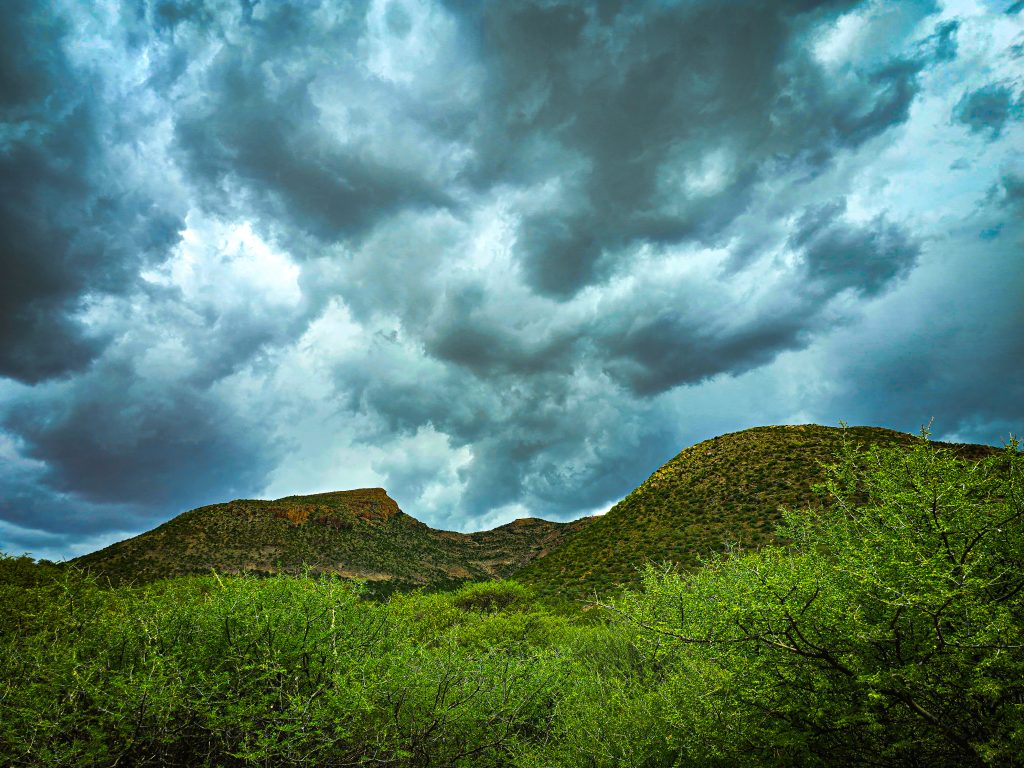
I bled more than he did. At least I had more to give.
I was hunting the Damara’s dik-dik, but I was fighting Namibia…and Namibia was winning.
This would be my 10th hunt with Jaques Jordaan of Ndlotti Safari Adventures of South Africa. But, seeing as dik-dik aren’t naturally found in South Africa, Jaques reached out to an experienced local, Wayne Cilliers of Ndumo Safaris and set us up on a trip to Namibia’s highland savannah.
Wayne is a longtime dangerous game guide, specializing in buffalo and elephant, but agreed to lead the way to Africa’s smallest antelope and my continued quest to complete the Tiny Ten. Jaques and Wayne both guided this hunt, and I have no doubt, four days in with nothing but misery to show for it, they regretted their decision.

Black hook thorn, buffalo thorn, white thorn, camel thorn and seemingly infinite types of hateful acacia formed walls of pain. Every manner of pointed, curved, and barbed greenery tore away at us. The heat hovered above 90 degrees with just enough humidity to result in a downpour each afternoon.
To top it off, I discovered no less than three different species of poisonous snake within two feet of my two feet. Even the stones were sharp. The only thing that didn’t try and stab, slice, or bite us was the butter tree. Jaques said it was poisonous. Of course it is.
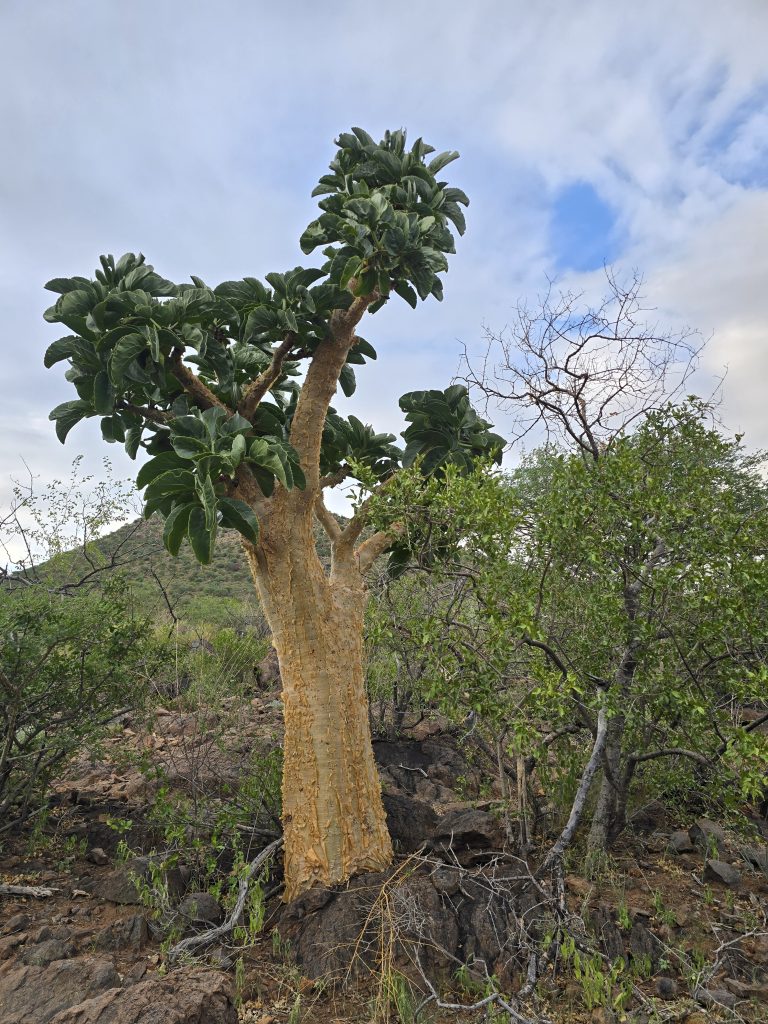
Somewhere inside all of that was our quarry, all 14 pounds of him. The male dik-dik’s size and tiny horns make him no threat to the myriad predators that abound. They’re no match for raptors or jackals, much less the hyena and leopards of the area. The tiniest of antelope has no claws or fangs, but its diminutive size and sleek frame are ideal for slipping through the protective thornbush, which it almost never leaves.
Wayne or Jaques would look for the path of least resistance through thickets before using shooting sticks to hold the thorns out of the way so we could walk through. I’d repeat the process using my extended tripod the best I could.
I never got all the way through unscathed. No matter how careful I was or how much help I got, I’d always end up stuck on something. I’d pick the thorns from my shirt and peel the barbs from my skin. A full month later I found an embedded thorn erupting from my knee. My legs were in such bad shape that I told other traveling hunters on the flight home that I’d been mauled by a leopard. No one doubted me.
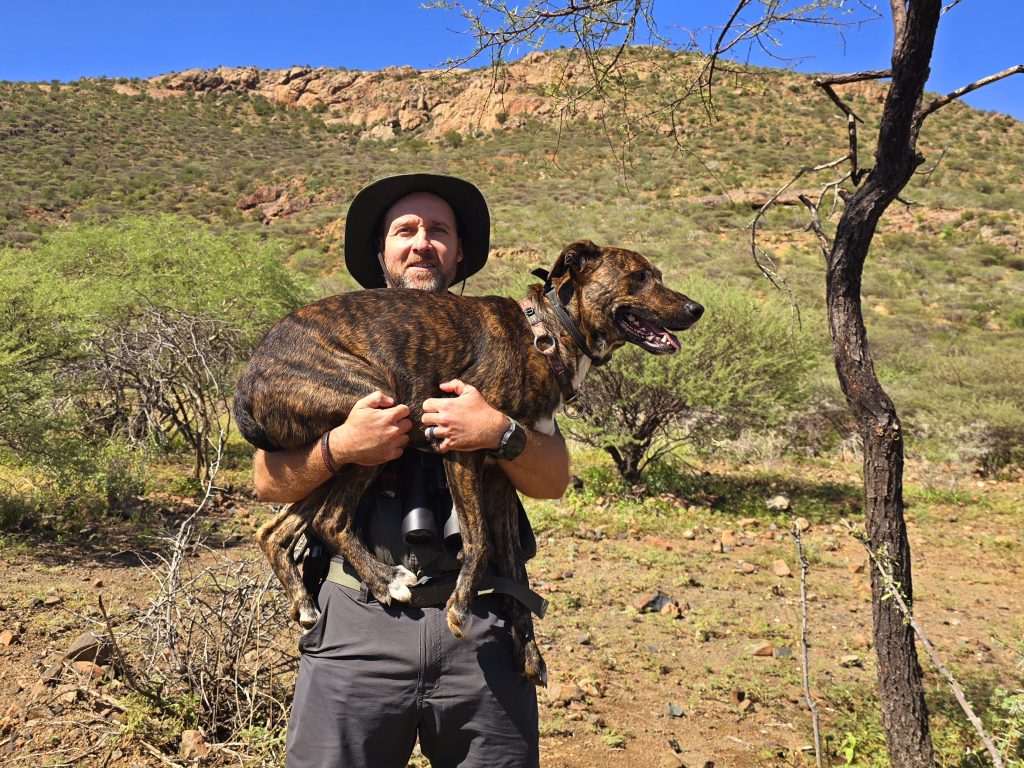
At some point Wayne’s dog had to be carried. Despite being a proper African mutt, he couldn’t keep the barbs out of his paws.
It was day three when we found our first set of tracks. I would have missed them but for the horned adder that drew my eyes to the ground next to my feet. We soon found more tracks, both male and female. As we had for the previous days, we inched our way through the thornveld.
Eventually, we found a midden. Like most of the pygmy antelope of Africa, Damara’s dik-dik is territorial and would likely return to the midden oven and over. We staked out the midden in the evening and the following morning, but…nothing.
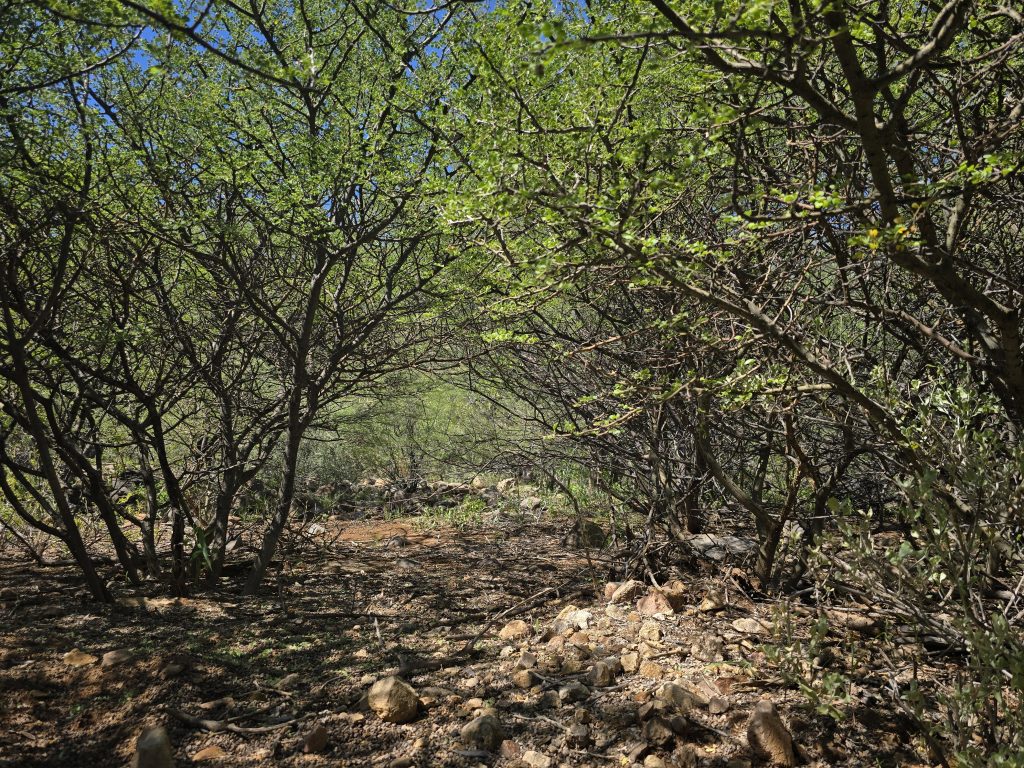
It was the afternoon of day four when, on the way to stalk the midden, we ran into some of the local sheep herders. They said they’d seen a pair of what was probably dik-dik in the area. Sure enough, a thorough search later revealed more tracks and another midden in a thicket at the bottom of a hillside. Climbing the hill to get a better look, we realized both middens were connected by a shallow gully less than half a mile from each other, but on different sides of the hill.
Jaques enlisted the help of the herders to head through the brush in the hopes of spooking the dik-dik into the open where Wayne and I, sitting overhead, would have a shot.
It didn’t work, but there was progress. Jaques and the herders actually managed to see both male and female dik-dik, but only in flashes of beige and brown disappearing into one thicket after the next. Hour after hot, frustrating hour, Wayne and I struggled to get even a glimpse of our diminutive prey speeding through the brush.
I wasn’t complaining. For the first time in four days I wasn’t being ripped apart by the green hate and I was grateful for the respite.
As the sun began to set, reality dawned on us. Given the size of our prey and how incredibly fast they moved through the bush, the likelihood of seeing the ram standing still — or even slowing down enough to take a shot — was zero. We headed back to camp.
We found them back in the same general area the next morning. Skirting the hillside we had sat atop the day before, we almost kicked the male as he materialized in front of us before heading into the darkest, thickest patch of brambles we’d seen yet. Halting all motion, we could hear the pair of pygmy antelope scrambling to get away.
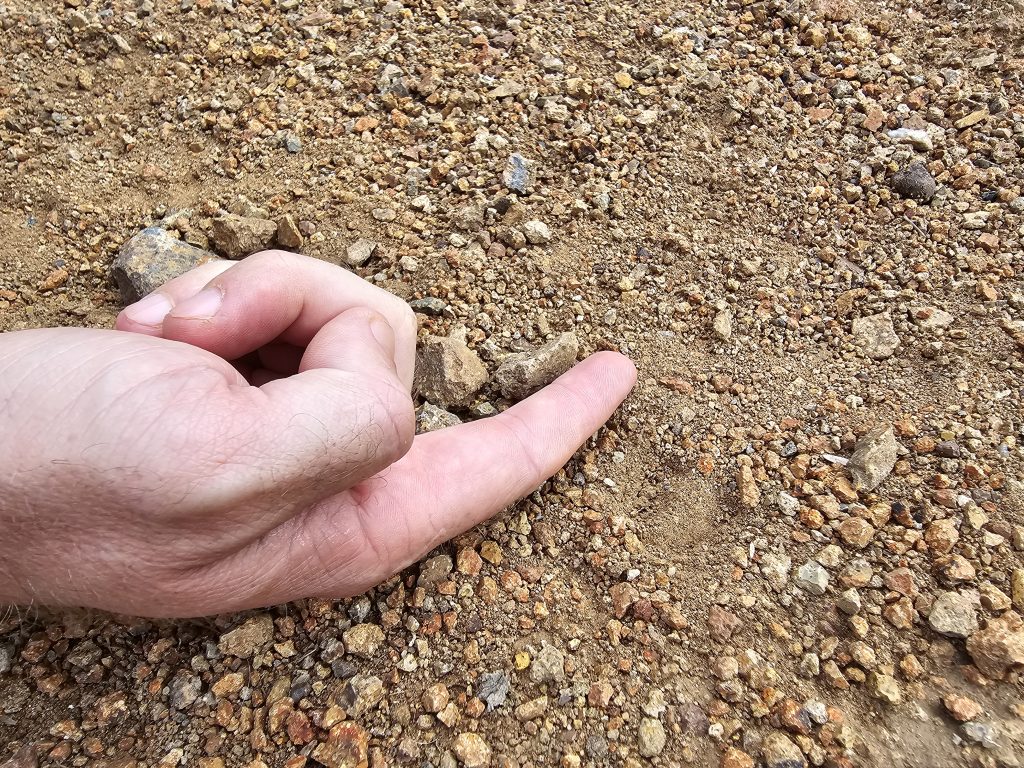
The cliff wall was in front with us opposite it, not more than 50 yards away. To our left and right, the tight thicket spread out not more than 75 yards before thinning out into open ground. We had them boxed in.
Our plan was simple. They could wait us out forever, so Wayne and I headed to the opposite side of the thicket from where we had seen them last. Jaques would do his best from the other side to drive them to us. I’d try not to shoot Jaques.

When I planned this hunt, I assumed, because of the size of the dik-dik, I’d need to bring a smaller caliber weapon, something like a 204 Ruger. Every experienced hunter, including both of my guides, suggested otherwise. I needed a heavy, large, solid bullet fired from a suitable rifle. I went with a Black Collar Arms rifle chambered in .375 Raptor, pushing a 260 grain Nosler Solid at 2,200 fps.
That heavy bullet wasn’t for the dik-dik, it was for everything between me and the dik-dik.
Jaques probed the thicket. The dik-dik split up, sprinting at the last possible moment only to stop and disappear again before we got sight of them. Wayne and I probed from the other side, only for the dik-dik to reverse the process and end up somewhere near Jaques. We’d hear them scurry, but never get sight of them long enough to tell if it was the male or female, their tiny horns being the only obvious difference.
This wasn’t going to work. We thought we’d at the very least push them from the ticket, but these little antelope don’t survive by taking chances in the open. Throughout the morning, past lunch, and well into the afternoon, nothing could drive them from the thicket and nothing could get them close enough — or slow enough — for us to get a shot off. In the few moments we’d get a glimpse, we couldn’t tell if it was the male or not.
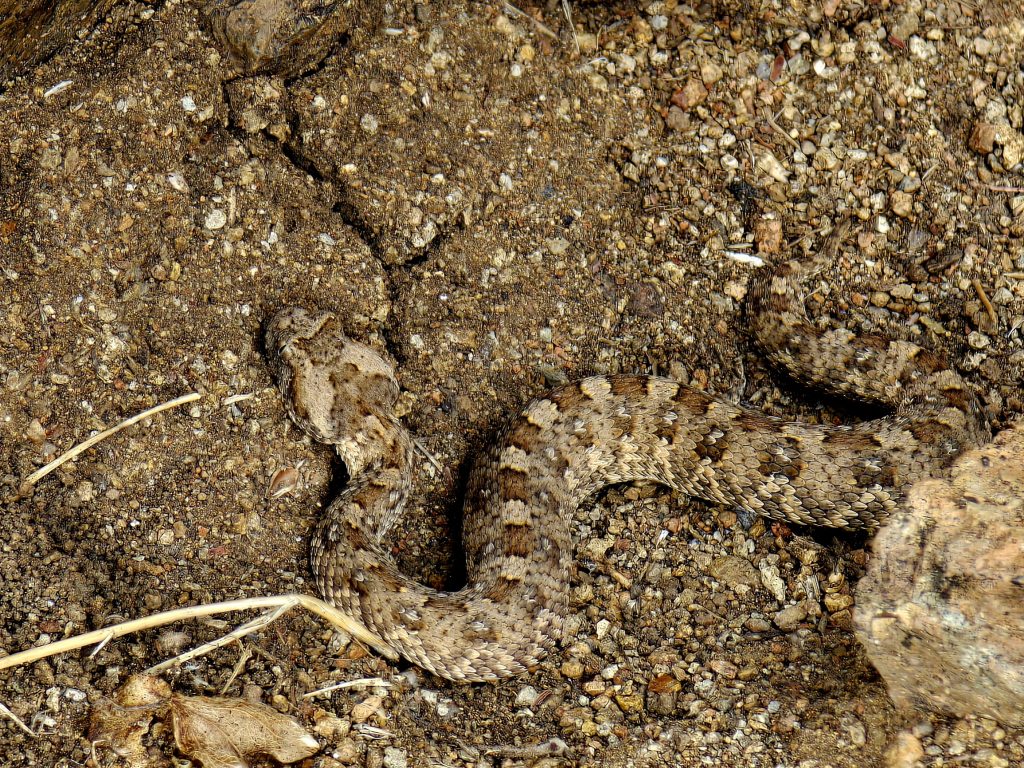
Re-gathering ourselves for strategy, water, and moral support, we went over our plan. For five days now, a veteran with multiple combat deployments and two professional hunters, one of which had hundreds of dangerous game hunts under his belt, were being beaten by Africa’s smallest antelope. The Dark Continent has many lessons to teach and we were learning them the hard way.
One of those lessons is patience. Wayne and Jaques doubled down and assured me that, despite days of failure, this was bound to work. Eventually. There’s a fine line between stubborn and dumb and I wasn’t sure what side of that line we were on.
As evening approached, we repeated our failures. I was posted behind one of the few larger trees as Wayne watched through the thicket 20 yards behind me. Once again, we heard Jaques struggling through the thorns headed in our direction. Once again, we listened as the dik-dik pair split up and sprint towards us.
There, at the bottom of the cliff, the tiniest of antelope nervously emerged.
“I see one!” I cried.
“The female’s at the cliff!” from Jaques.
“Jon…Jon he’s headed for you now!” Wayne yelled.
Through the heavy underbrush, dodging the spined thorns that adorned their bases, flashes of buff-hued fur sprinted in my direction.
“You’ve got the male, THAT’S THE MALE!” Jaques exclaimed.
“SHOOT JON, SHOOT!” Wayne screamed.
But it was hopeless.
“I can’t, there’s too much shit in the way!” I cried.
“SHOOT THROUGH THE SHIT!” demanded Wayne as the dik dik ran toward me.
A snap shot at close range, I was pretty sure the reticle was on the general front area of the animal when the trigger broke. After 5 days of sweating, bleeding, complaining, and one loud boom, all was quiet.
The female ran past. She didn’t even slow down for her mate. There was nothing she could do for him now.
“He’s down, HE’S DOWN!” Wayne sounded genuinely surprised. Jaques broke out in laughter.
Twenty-five yards away, there was a large hole punched right through the base of a small tree. On the other side of that tree lay the male, a bullet, and a good bit of the tree itself, driven right through his vitals.
I blinked in stunned silence. I couldn’t believe it worked. It actually worked.
It was one hell of a hunt and the toughest of my Tiny Ten, in the salt.
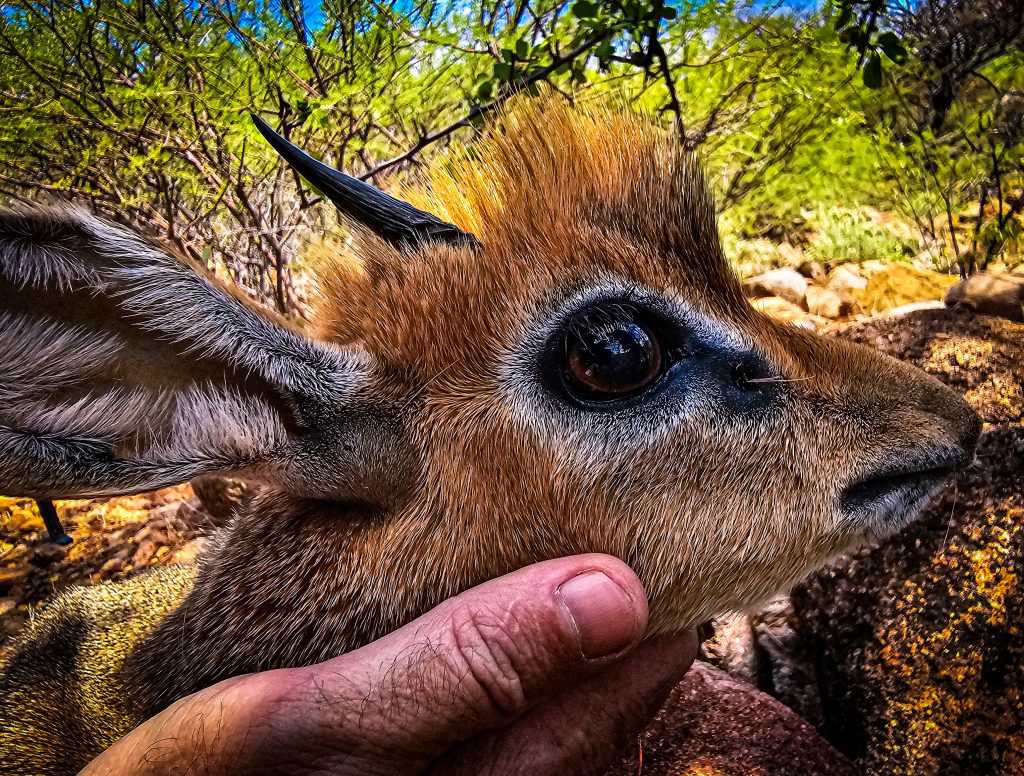


I get a potential security threat warning for 375raptor dot com.
That’s the biggest problem with the caliber, the support that used to exist online is now gone. Archived reloading recipes without much confirmation is all I could find, and none of the velocities posted matched what I’m getting. That said, once you figure out a load (and I’ve settled on a couple) the cartridge is easy to create from .308Win brass, .375″ bullets exist in wide variety, and the rifle itself has proven to be extremely potent at a wide variety of ranges and applications. I used the same gun, loaded with 270gr Speer soft points, to take mountain zebras at 500 yard and more. I was punching clean through gemsbok at 330 yards. That’s from a 6lb gun with a 16″ barrel.
We’re taking care of that! Support for 375 Raptor is headed in the right direction. We’re about to launch a store for 375 R loaded ammo and reloading supplies, including 375 Raptor headstamped brass. We’ll have multiple supersonic and subsonic loads available within a few weeks, including some relatively affordable practice/training/pest eradication ammo.
We have a load recipe guide here: https://blackcollararms.com/wp-content/uploads/2024/07/375-Raptor-Load-Data.pdf
Finally, 375 Raptor is taking steps toward SAAMI standardization, which will be huge for its wider adoption.
Great story, strange animal.
Nice. My PH said that the Tiny 10 is much harder to acheive than the “Bigger” 10.
A lot more people have taken the Big 5 or Dangerous 7 than have taken the Tiny 10. The Tiny 10 requires you to visit multiple countries on multiple trips. None of them herd up and they live solitary lives and survive by evasion, a few are nocturnal. Some are spot and stalk, some must be hunted from blinds. Some are in the mountains, some are in swamps, and everything between. The kills are easy, but the hunts are hard.
I’m going to have nightmares about hooked thorns now.
I’m sure Jeremy (who may, or may not have, spoken in class today)’s rifle is a fine gun, but I would die of embarrassment if someone at the range asked me what it’s name was…
This isn’t Jeremy’s gun anymore, I bought it. I had originally intended on taking a traditional bolt gun in 9.3×62 (a proper bushveld rifle). But this was to be a combination hunt in 2 different countries and some very different areas, to include lots of mountainous terrain in high heat. A super lightweight rifle was appealing. What really surprised me was how accurate and versatile the gun proved to be. I’ve been on 3 different hunts in southern Africa so far this year and this gun was on 2 of them. After watching how this little gun drops zebra, gemsbok, and other big tough game, I’d have no issues taking an elk at 500 yards with it. I am surprised and smitten.
I don’t doubt it’s a fine rifle.
It just that the name is mega-cringe-worthy…
Wait till you find out about our Priapus Grip
I was just the other day wondering when another JWT hunt story would drop. That is some truly terrifying territory to have to traverse to get to your prey.
Thanks for inviting us along…
I’ve been doing a good bit of hunting, but I also started a new company (insuring firearms manufacturers) and it’s taking up all my time. Pretty much all my writing is being done on an airplane.
Thanks for the story! Which of the tiny ten have you taken? How many countries left to get the others?
6 so far. Can probably do the rest with 2 more trips to SA and one more trip to Mozambique.
Awesome, good luck! Here in Cameroon they have the duiker and blue duiker, not sure if they have any others.
South Africa has common/gray, blue, and red duikers.
Cameroon has a bunch of sub species of duikers. I’d like to go after all those. But you also have Forest Buffalo which is pretty high on my list. I am booked up for 2024 and 2025 but maybe after that I’ll have to make a trip to Cameroon.
The stories of people hunting forest buffalo are amazing. I live in Yaounde when here in Cameroon, hit me up if you ever make it and need an airport pickup or a place to stay in Yaounde.